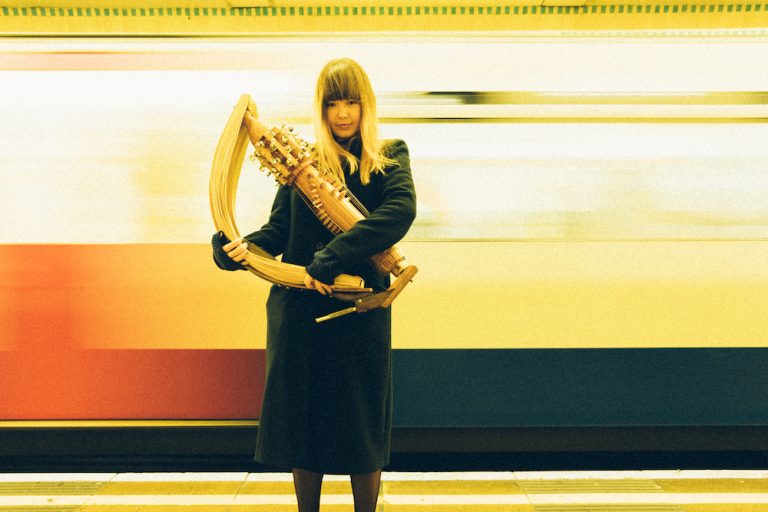Aga Ujma is a London-based Polish artist whose preferred instrument is the gendèr – a Gamelan instrument used in Balinese and Javanese traditional music – as well as her elf-like voice. If you, like us, are just hearing of her, then her new single – and first for Slow Dance Records – “In The Ocean” is the perfect introduction. She says:
“‘In the ocean’ was written using traditional polyphonic Central Javanese patterns (cengkok) played on gender barung in unusual ways: I extended them, chopped in little chunks and alternated some of their melodies and glued them back together, creating a mosaic with numeric music notation (kepatihan). Then, I fitted in a tailored singing part with a poem that reflects on the state of sadness and where it can lead us if we trust the process. It also touches upon missing multiple homes at the same time and a psychedelic tropical picnic on a desert beach.”
Her natural ability for unusual melodic patterns, ethereal voice and open-armed approach to the strange place her naturally in the lineage of Björk – few can claim to be so genuinely compelled to explore the unsettling side of beauty. Aga’s music is full of her own unique style and personality though, and on “In The Ocean” her gendèr makes the perfect foil to her softly sung story. Both her instrument and voice are plainly gorgeous, but jump and swoop in unexpected ways that keep you on edge and suggest that there’s something more menacing at play beneath the glimmering veneer. As Aga pulls us deeper into “In The Ocean”, she starts to layer her voice, and all of a sudden we feel we’ve been pulled to a cavern under the waves and are surrounded by a horde of mythical creatures – whether they’re friendly or not is uncertain.
The video for “In The Ocean” was made by New York-based Polish filmmaker Gabriela Sibilska, who says:
“Aga’s music has a lot of layers, and it is so beautifully complicated and complex. In my work, I like to combine more traditional, cartoony 2D animation with a range of experimental practices, including glitch art and exploring the power of old analog video mixers.”
With more to come from Aga Ujma soon, you can keep up to date by following her on Facebook and Instagram.

